Ghost Town on the Desert Coast of Namibia
Elizabeth Bay - An abandoned and desolate place.
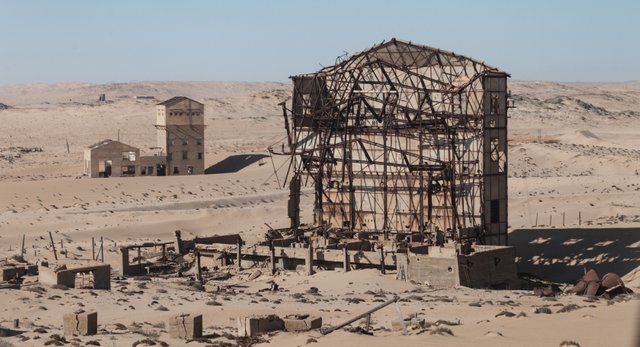
In August 2015, my wife Patricia, and friend Nigel and I went on a road-trip from Cape Town to Luderitz in Namibia. One of the places we wanted to visit was the ghost mining village of Elizabethbucht on the coast of Namibia, now known as Elizabeth Bay. This was in the restricted zone, the Sperregebiet, and permits were required to gain entry. One had to be accompanied by a guide. (I believe you can no longer visit this mining village as the tours have ceased.) After the paper work required for permits (certified copies of passports were required and sent in advance from South Africa) was completed in Luderitz, we set off in our guide's vehicle. On entering the mining area, we passed through a checkpoint. All food had to be handed in and stored until our return. On leaving the compound one is x-rayed and searched to make sure no diamonds were picked up and smuggled out. In fact you are warned from venturing into the desert from most roads in the area as it is the Sperregebiet. (forbidden area)
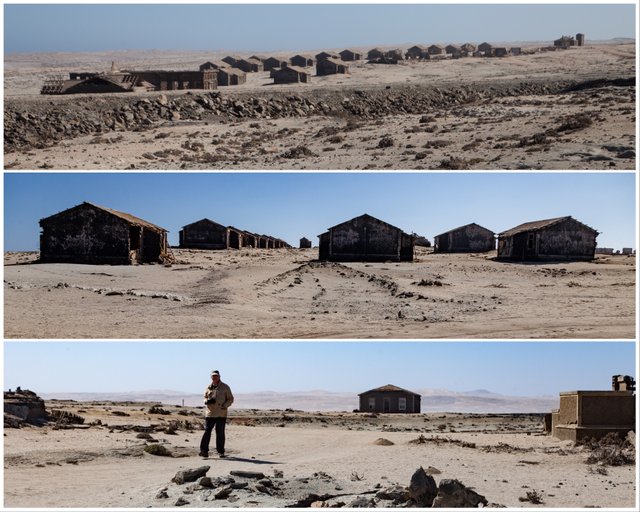
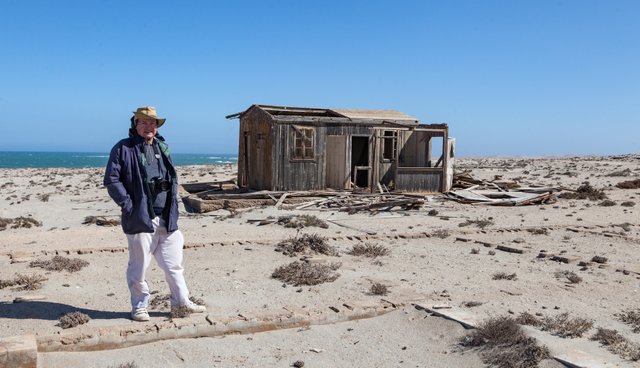
The wonderful thing about the restricted area is that nothing has been removed or vandalised from the site. Everything is in a state of gentle decay.
Eureka!
Diamonds were first discovered in South-West Africa in 1908. At that time it was a German colony. The story is told that a railway employee, Zacherias Lewala, clearing sand from the tracks noticed some unusual looking stones in the sand. These were shown to August Stauch a former employee of De Beers. He took the stones to Luderitz and they were confirmed to be diamonds. This desolate and inhospitable region turned out to have the richest diamond deposits in the world.
A scramble took place overnight and the town of Kolmanskop grew rapidly out of the diamond boom that followed.
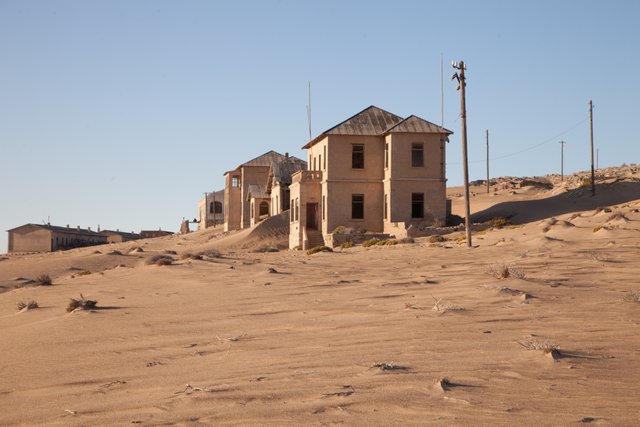
Kolmanskop ghost town, a deserted mining village near Luderitz, Namibia. Well worth a visit.
https://steemit.com/kolmanskop/@capelight/ghost-town-in-the-desert-kolmanskp-namibia
Elizabthbucht
A small bay on the Atlantic coast about 40kn south of Luderitz. The bay was originally named Golfo de Sao Estevao by Bartholmew Diaz, the Portuguese explorer, trying to find a sea route to the East. He reached it on 26 December 1487, the day of the first Christian martyr Saint Stephen.
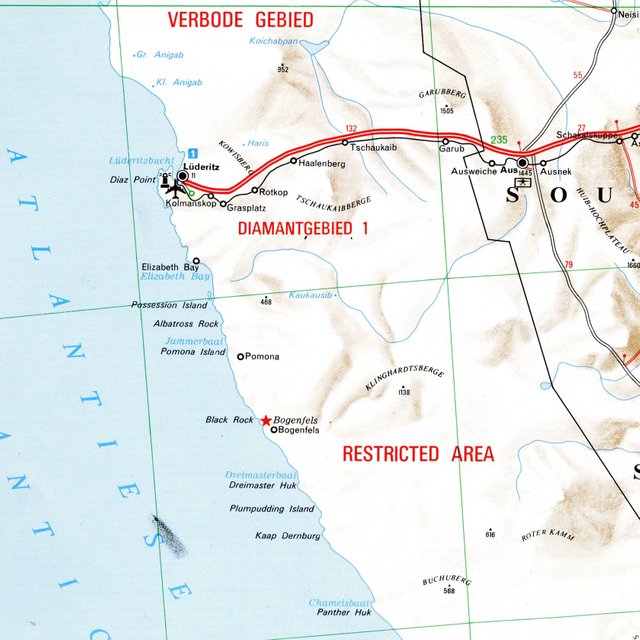
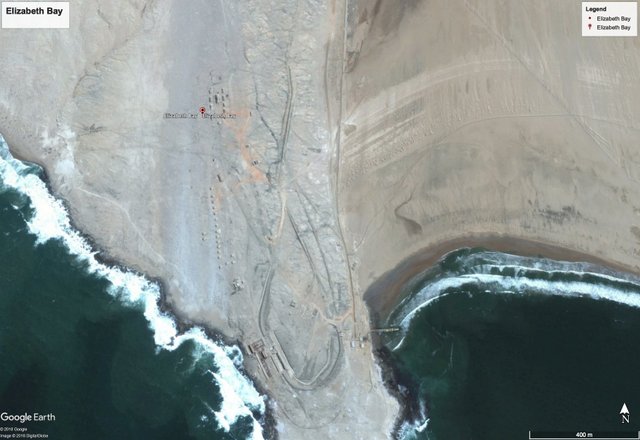
Google Earth close-up showing location of the abandoned mining village.
A mine is established
In 1911 an open cast mine was undertaken by the Deutsche Kolonialgesellshaft Sudwestafrika. (DKW) During World War 1 mining was interrupted and after the war the territory was now under the mandate of the League of Nations and administered by South Africa. A second phase of mining now under the control of Consolidated Diamond Mines of SWA known as CDM resumed in the early 1920’s. A huge amount of money was spent on infrastucture up until 1926. A report indicates: due to the completion of the large diamond sorting plant at Elizabethbucht and the power station at Luderitz resulted in a large drop in the importation of mining and electrical plant and material. The value of mining machinery imported during 1926 was 110,092 pounds and in 1927 only 39621 pounds. Other materials such as electric cable and cement showed a similar decrease.
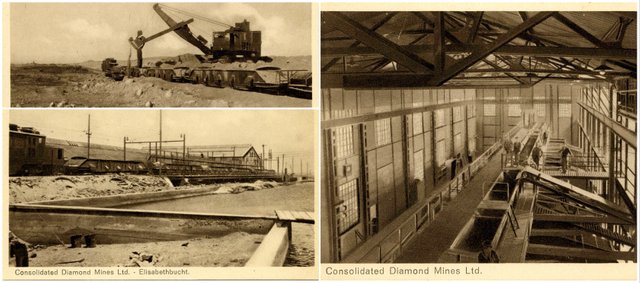
Three postcards of the open-cast mine circa. 1927. Collection the author
In 1928 the discovery of the richest diamond deposits ever known was discovered 230 km south of Elizabethbucht near the mouth of the Orange River. With this, and the coming of the Great Depression and World War II, the mine was no longer viable and closed operations in 1948. On the 21 March 1990 Namibia gained independence from South Africa following the Namibian War of Independence. The new government spent $53 million on creating a new diamond mine on the site with an expected life of ten years. It was opened by Dr Sam Nujoma on the 2 August 1991. Mining operations again ceased sometime in 1998 and by the year 2000 the mining village became a ghost town and it was possible for the public to enter with a permit and official guide. In 2005 the mine was once again operational thus prolonging its lifespan. It is jointly owned by De Beers and the Namibian government. Unfortunately, at the time of writing in 2018 it is no longer possible to gain entrance so I feel lucky to have been able to visit in 2015. The tour lasted about three hours being able to walk around and explore the wind battered and weathered buildings. A wonderful site for the photographer looking for shapes and texture. There is very little colour with most buildings silloutted against the harsh desert light.
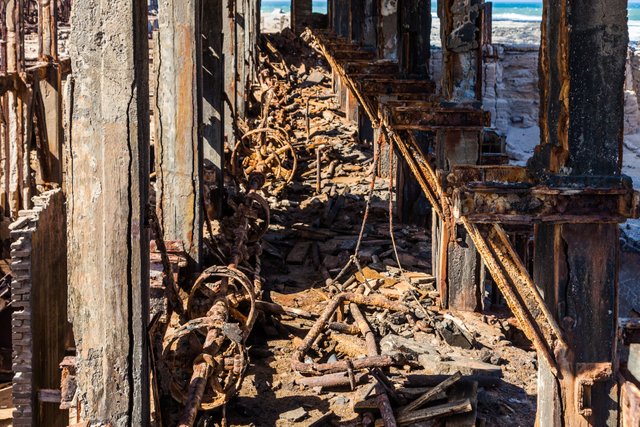
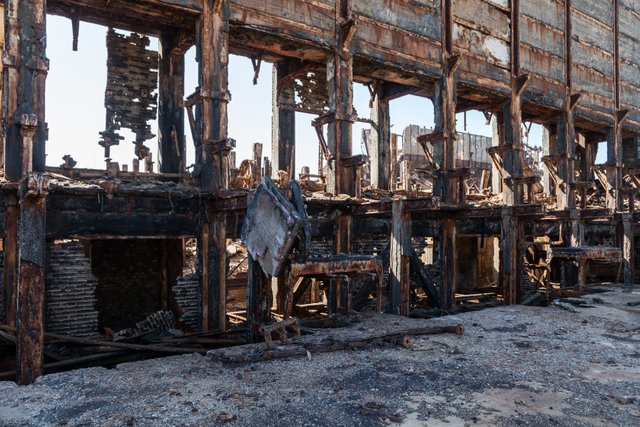
Mining structures at the present time totally rusted by the salt air.
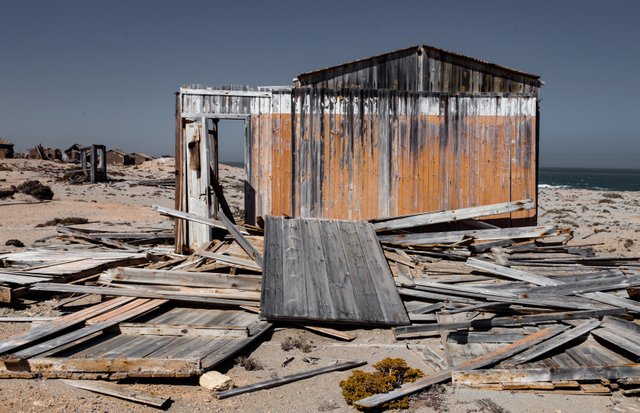
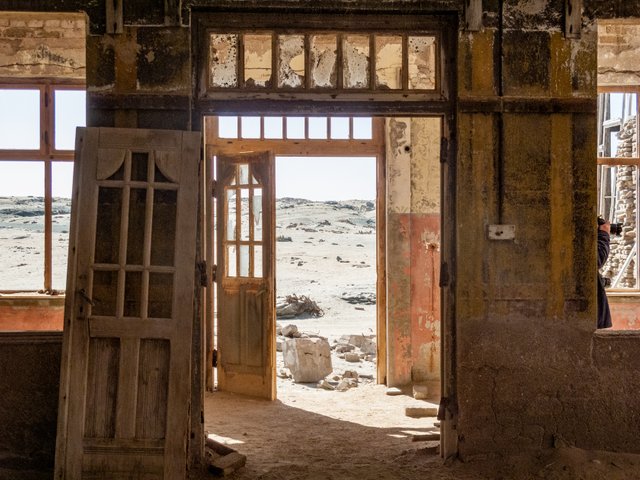
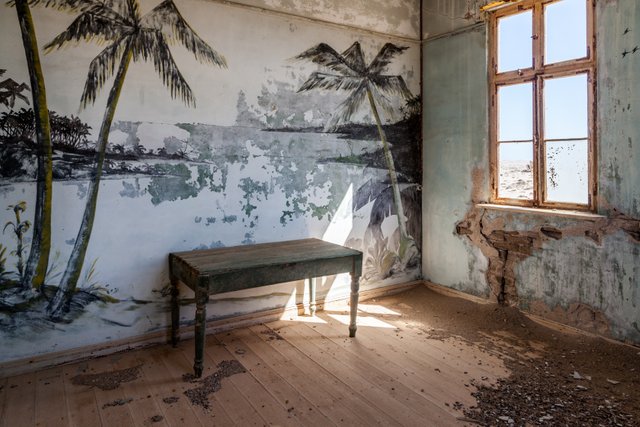
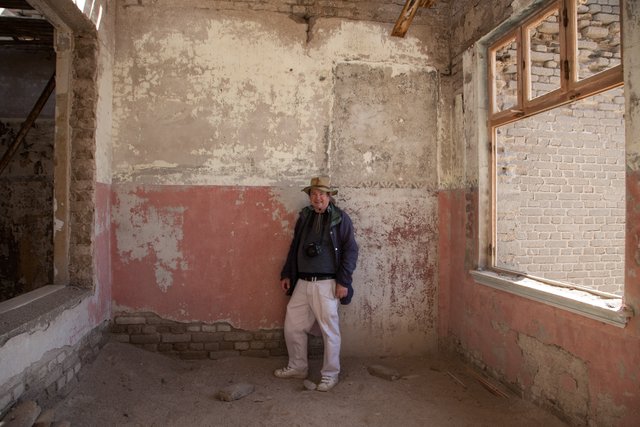
The textures inside the buildings are wonderful, for me, it was a photographer's dream.
A cold and bleak coast
The area although in a desert is cold and windy blowing from the land to the sea. Rainfall rarely exceeds 10 millimeters annually and the resulting. The upwelling of the cold Benguela current results in dense ocean fogs for much of the year. The heavy surf pounds on the beaches. The climate is inhospitable. Walking through the deserted buildings I was lucky to see a Brown Hyena scurrying away in the distance otherwise the area seem devoid of other animal and plants. Bricks have been hollowed out and timber sandblasted by the constant wind blowing. Yet at one time families lived here making a life for themselves. It’s hard to believe that most houses had a garden and a touch of greenery when the mine was operational.
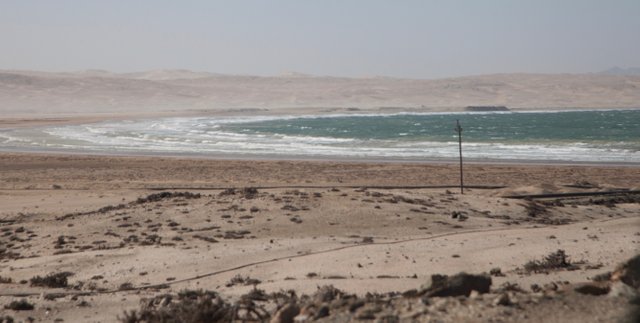
Elizabeth Bay
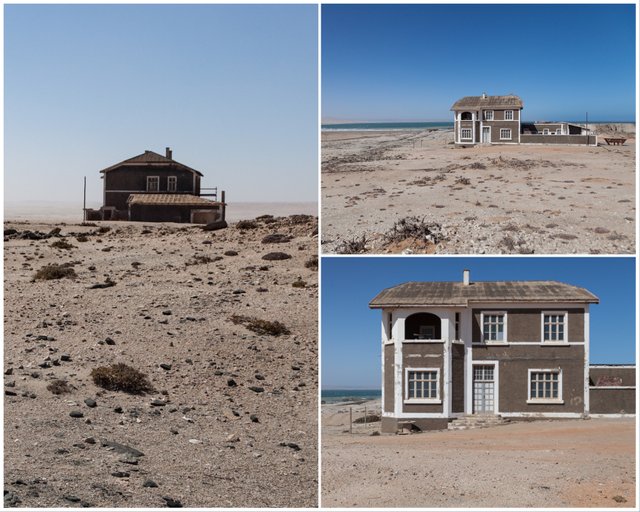
The mine managers house
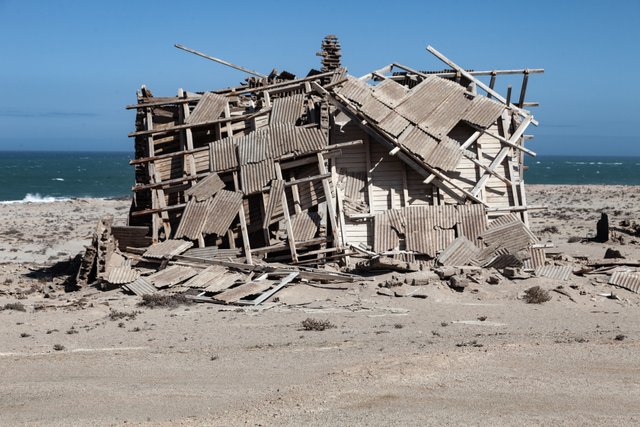
Windswept
The derelict theatre building known as the Casino Is the most prominent structure on the mine, featured in the TV series “Life after People”. The episode dealt with the effects of wind and sand on the buildings in this hostile environment.
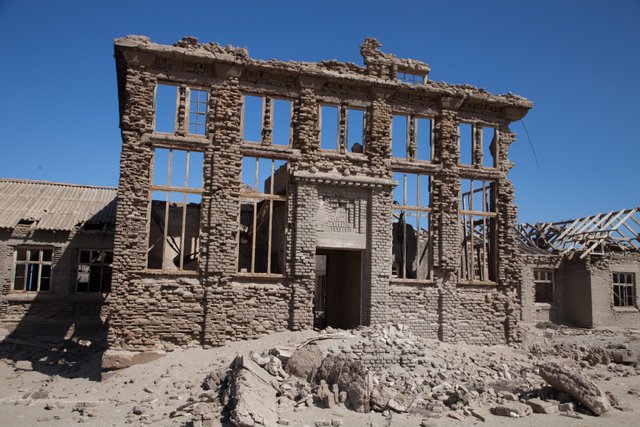
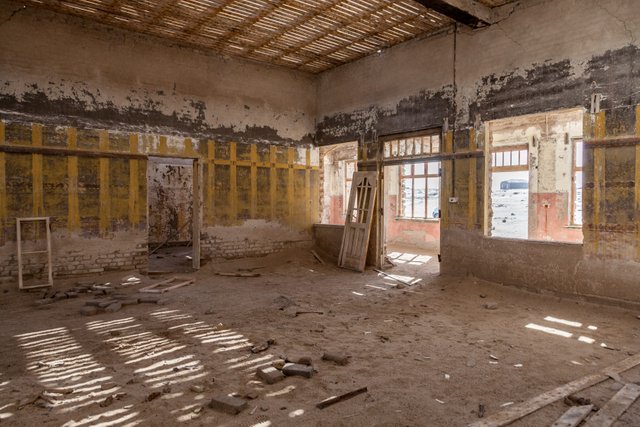
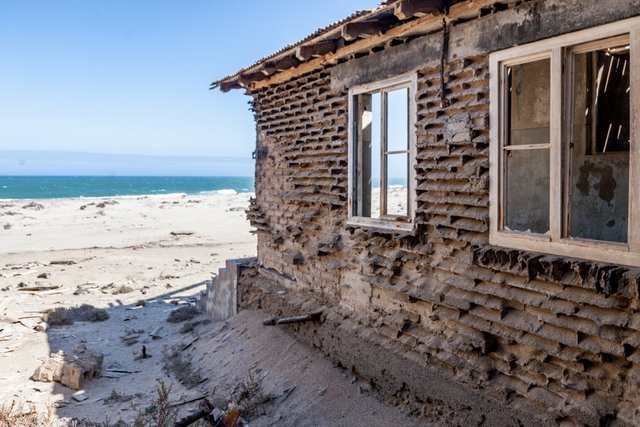
The effects of wind weathering on the bricks
Elizabeth Bay is home to forty percent of the world’s fur seals and the bay is teaming with rock lobsters as it is in a restricted area and difficult to get to by sea. It is also home to the Brown Hyena and they have made dens in old pipe or drainage systems in some of the derelict buildings. These offer protection from the elements as well as for their cubs.
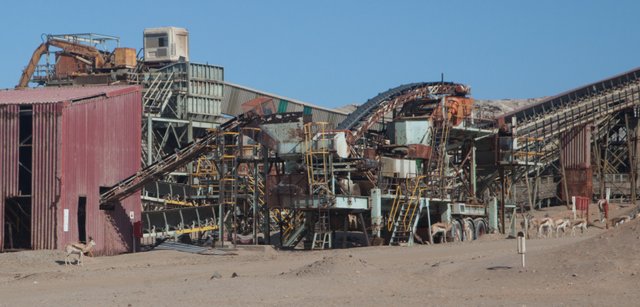
On the way out of present day mining area I noticed a herd of Springbok against this structure.
We all agreed that the visit to Elizabethbucht was the highlight of our trip and we were privileged to have had the opportunity of visiting. Hope you enjoyed the tour.
References
Note: There is not much information about the mine especially the early period on the web.
https://en.wikipedia.org/wiki/Elizabeth_Bay,_Namibia
Standard Encylopedia of Southern Africa Volume 4 page 292
I hope you enjoyed the images, you might also like this post of another Ghost Town at Kolmanskop near Luderitz in Namibia
https://steemit.com/kolmanskop/@capelight/ghost-town-in-the-desert-kolmanskp-namibia
Awesome ... thanks for sharing those pictures and the story.
Thanks,glad you enjoyed it.
A really beatiful place to visit. We were there in 2014 visiting the Northern parts of Namibia and last year we explored the south. Photo heaven!!
Thanks, it is an amazing place. An the biting winds were just as expected.
Wonderful post, but seeing the decaying buildings are a bit sad, it is a shame that it was just abandoned. Thank you for sharing!
It’s a mining village. Once the mine stops there is no point in living there. Very harsh place, cold, wind blows. No plants or greenery. Also in a restricted area so no one can cart anything away. Slowly everything just weathers away.
An area I still wish to explore, did not realize they have shut this off again, what a pity.
Your photography really does tell the story of man moving out and nature taking it all back again.
Super descriptive, makes one feel as though you had been there, so much of that coastline is not accessible to the public, creates an image of going out into the sand and picking up diamonds at a whim, not sure many would know what they look like in the raw stage of a stone.
Your post has been selected to be entered into @teamsouthafrica's Daily Nominated Post section in #teamsouthafrica - Discord group @capelight - Congratulations!
It was a wonderful experience to get to see Elizabeth Bay. Thanks, Joan.
Thank you @capelight for the very detailed article and all the great photos.
There are some truly remarkable places to visit at the bottom end of Africa where we stay and frankly I would visit most of them before I would ever be worried to go overseas.
Thank you for sharing this with us.
You are so right, many wonderful places to visit.
Great write up. To think the government spent so much to excavate that area I wonder how many dollars worth of diamonds were brought to the surface... I love the colour palette on show, the earthy reds when mixed contrasted with the blue of the sky really draws the eye in.
Thanks Harry, it’s hard to find information on this mine. Maybe De Beers archive will have facts and figures.
Congratulations, Your Post Has Been Added To The Steemit Worldmap!
Author link: http://steemitworldmap.com?author=capelight
Post link: http://steemitworldmap.com?post=ghost-town-on-the-desert-coast-elizabeth-bay-namibia
Want to have your post on the map too?
Thanks, works well.
Heya, just swinging by to let you know you're being featured in our Daily Travel Digest!
Great, I’ll have a look.
That sounds like an amazing experience. Thanks for sharing :)
Wow this is so amazing, adding it to my travel bucket list. Thanks for sharing.
Thanks, Sweetpea. Namibia is a wonderful scenic place to visit. Wide open spaces.